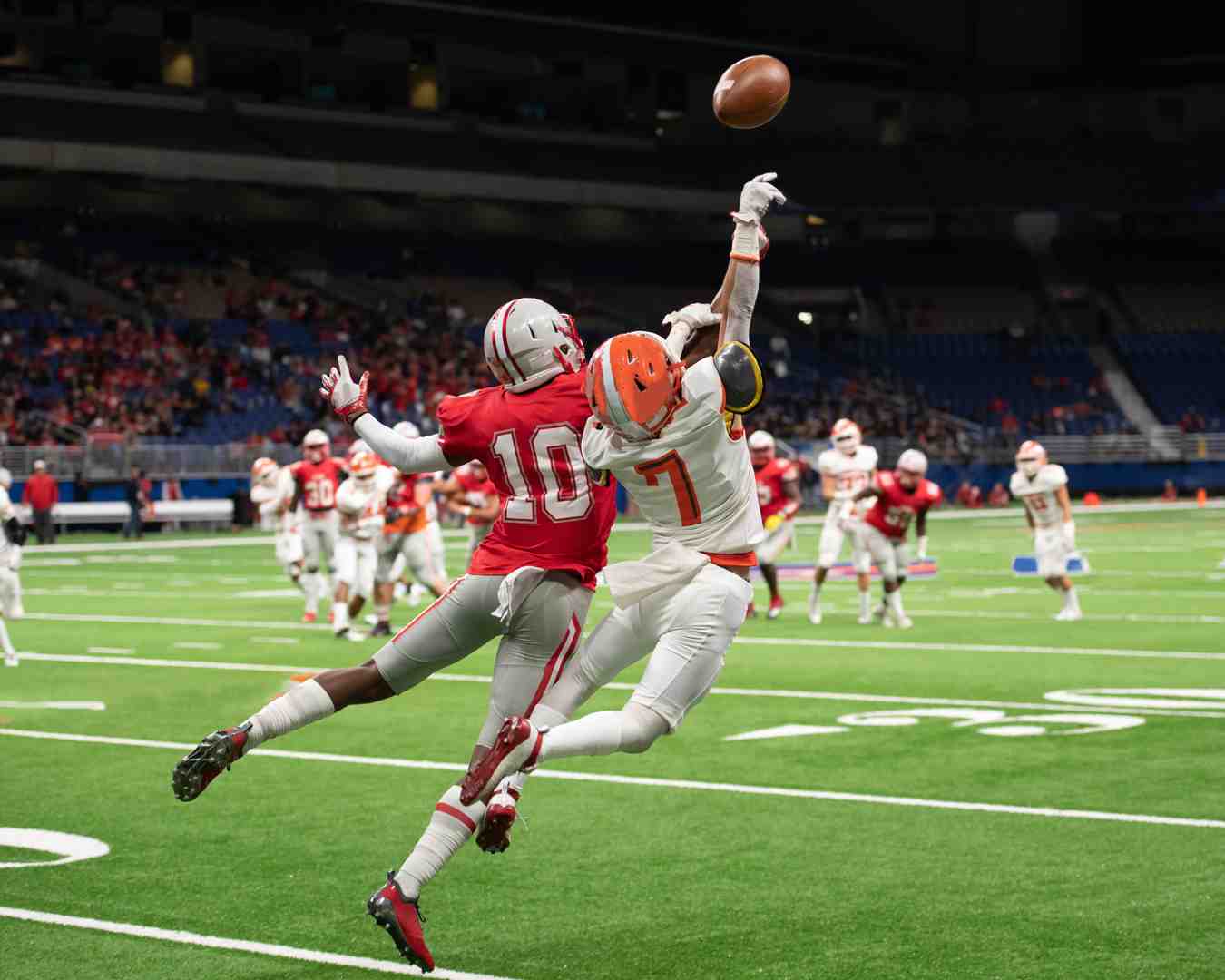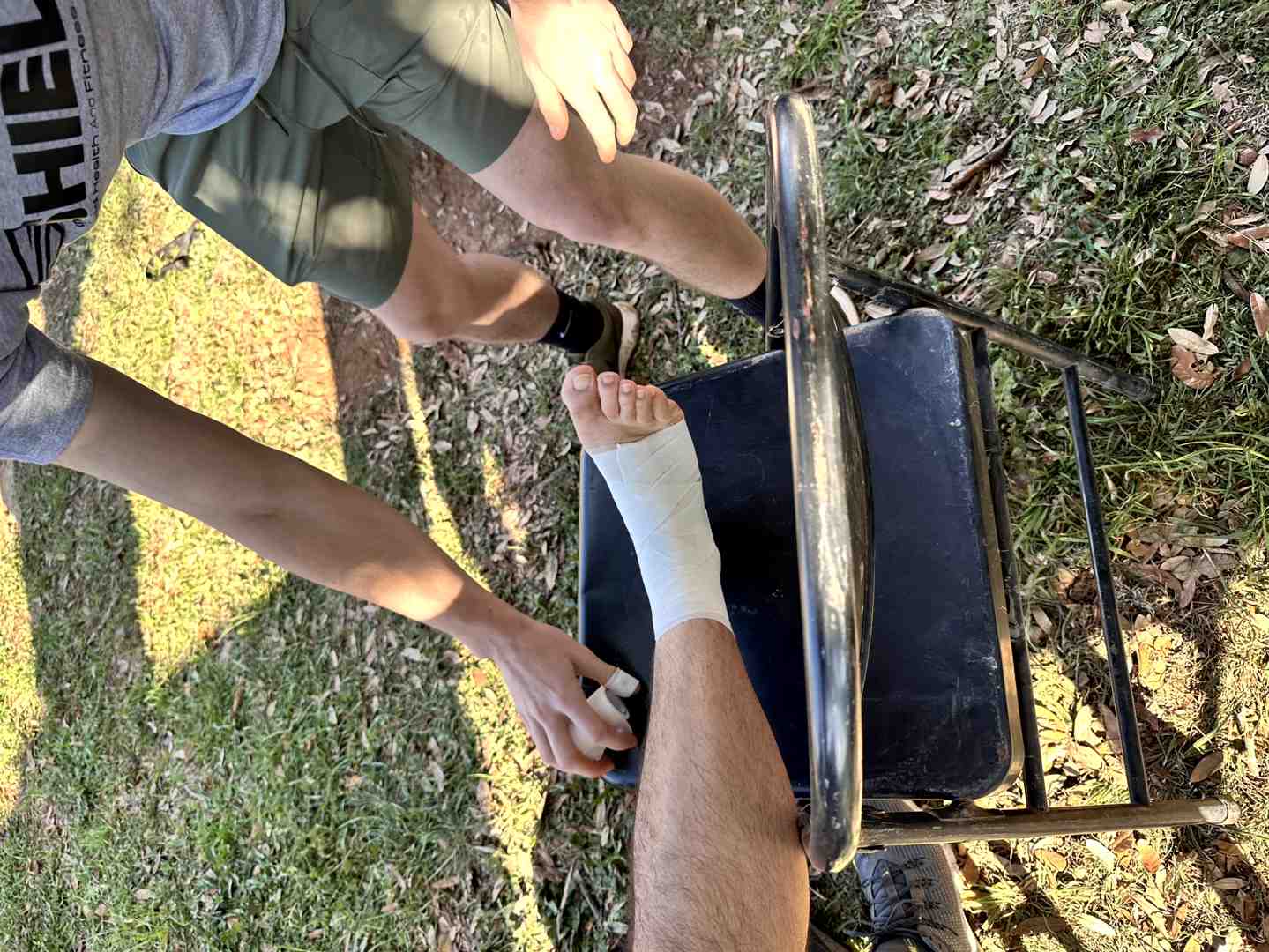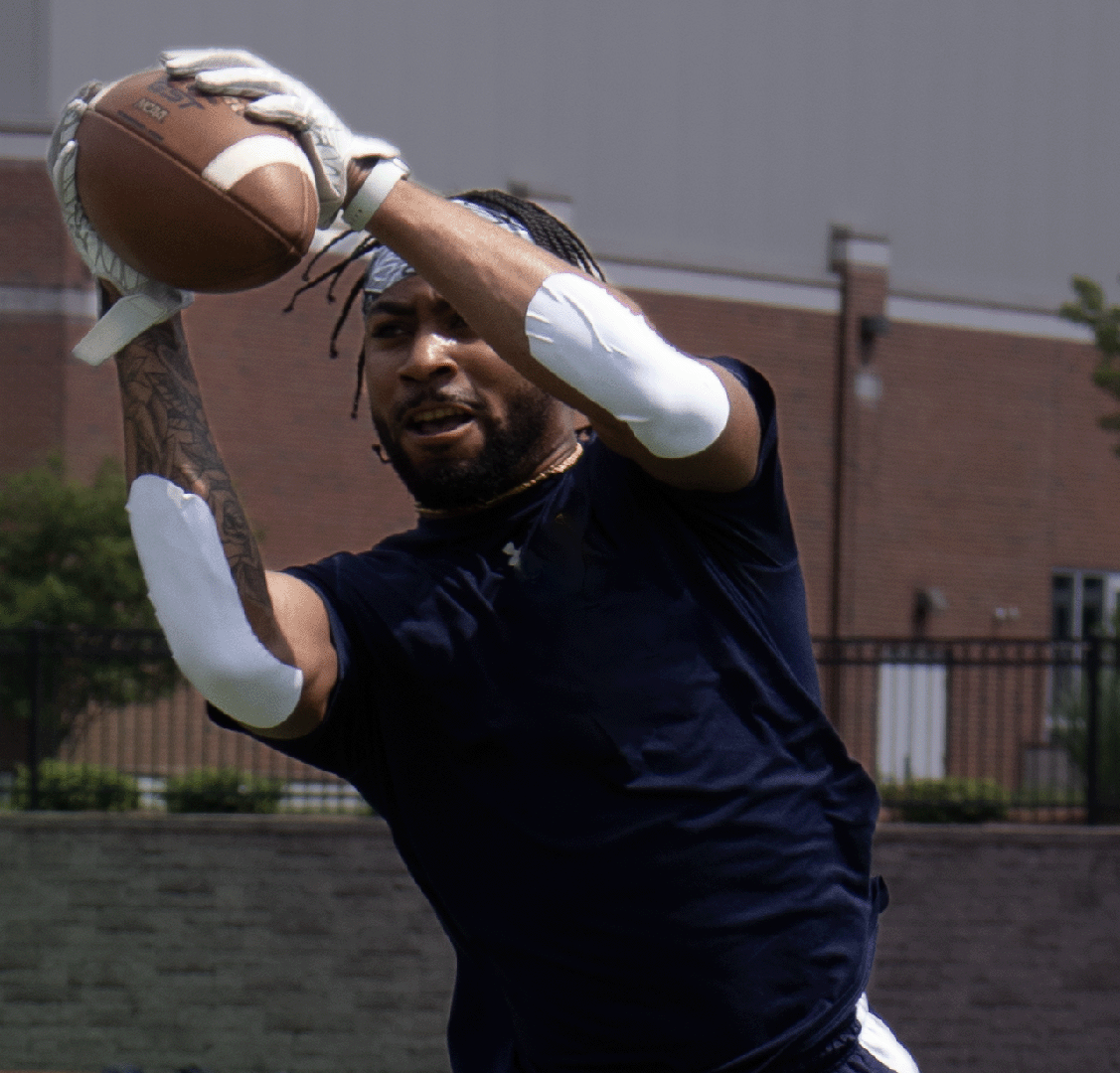Football Tape Secrets: What, Why, and How Players Get Wrapped
Why Athletic Tape is Essential for Football Players

Athletic tape for football players serves three critical purposes: injury prevention, joint support, and skin protection. Whether for Friday night lights or the big game, the tape on wrists, ankles, and arms isn't just for show—it's essential protective gear.
Quick Answer: Athletic Tape Benefits for Football
- Injury Prevention: Stabilizes joints and limits dangerous motion
- Performance Support: Improves proprioception and confidence
- Skin Protection: Guards against turf burns and abrasions
- Recovery Aid: Supports healing while allowing continued play
Football is a high-contact sport where players regularly collide with opponents and turf. Research shows players face a high risk of joint injuries, especially to vulnerable wrists and ankles during tackles or falls.
From high school to the NFL, players tape their arms, wrists, and cleats. Linemen and safeties often use zinc-oxide sports tape to protect fingers and wrists, even under their gloves. Running backs, wide receivers, and defensive backs—positions prone to turf contact—rely on specialized taping to prevent injuries like turf burn, finger or ankle injuries and other impact-related issues.
The science is simple: proper application provides compressive support, reducing ligament stress while limiting injury-causing motion. Different tapes serve different roles, from rigid athletic tape for joint restriction to elastic (stretch tapes) and cohesive wraps, even kinesiology tape, for muscle, joint support and protection that allows range of motion.
I'm Josh Key from SHIELD Health & Fitness. I've worked with athletes at all levels, and my experience testing athletic tape for football players with pros shows that the right tape, applied correctly, can be the difference between playing and sitting on the sideline.
The Gridiron Armor: Why Football Players Use Athletic Tape
Watch any football game, and you'll see players wrapped in athletic tape. It's not for show; it's a strategy based on technique, skill, technology and thorough research by qualified care providers.
Athletic tape for football players is like invisible armor. Every snap brings the potential for twisted ankles, hyperextended wrists, or painful scrapes from artificial turf.
The tape serves three critical purposes:
First, injury prevention. Tape acts as a safety net, providing extra support to vulnerable joints before an injury occurs.
Second, a performance boost. Secure and supported players perform with more confidence, focusing on the play instead of a previous injury.
Finally, tape aids recovery. Proper taping can allow players with minor injuries to stay in the game by providing smart support that allows healing and moderates inflammatory reactions from strain and musculoskeletal stress.
Want to dive deeper into taping fundamentals? Check out our comprehensive Your guide to athletic taping. And for protecting your skin during those intense games, our guide on Protect Your Skin from the Gridiron Grind has you covered.
The Science of Support and Stability
The science behind athletic tape is impressive.
Tape acts as an external ligament. Wrapping an ankle or wrist creates a physical barrier, crucial for preventing sprains.
It works by limiting dangerous motion. The joint can move safely but is prevented from hyperextending or twisting into injurious positions.
Beyond restriction, tape provides compressive support to reduce swelling and aid muscle function. This improves proprioception—your body's awareness of joint position. Better proprioception leads to better balance, quicker reactions, and more precise movements. A quarterback can focus on reading the defense, not his wrist mechanics.
The tape also helps reduce ligament stress during explosive movements. For players recovering from injuries, this support allows for an earlier return to sport while minimizing re-injury risk.
Protection from the Field
Turf burn is a painful reality of modern football. Artificial turf is harsh on skin, causing nasty abrasions and scrapes that can become infected.
Specialized tape is a game-changer. Players apply it to exposed arms, elbows, and knees as a protective barrier. This benefits players in high-contact positions like wide receivers, running backs, and defensive players.
The protection extends beyond turf burn to general abrasions from contact with equipment or the ground.
Preventing these injuries isn't just about avoiding pain—it's about staying healthy to play at your best. A turf burn on a throwing or carrying arm can affect grip and accuracy for weeks, or can disrupt completion percentages and run gain yardage.
For more details about the challenges of playing on artificial surfaces, read our article on Artificial Turf in Football Stadiums. And if you want comprehensive protection strategies, our Turf Burn Protection guide has everything you need to know.
The Taping Playbook: A Guide to Athletic Tape for Football Players
Choosing the right athletic tape for football players is like choosing the right cleats. Different situations require different tapes, and the right choice can keep you in the game.
The variety of tapes—rigid, elastic, and protective wraps—can seem overwhelming. However, they are simply different combinations of material, adhesion, and elasticity, each designed for specific on-field challenges. Whether you need joint support, muscle assistance, or turf protection, there's a tape for the job. For those new to specialized protective taping, our Turf Tape 101 guide covers the essentials.
Choosing the Right Athletic Tape for Football Players
Let's break down the main players in the taping game. Understanding these differences will help you make smarter choices for your protection and performance.
| Type of Tape | Primary Use | Material | Elasticity | Best For (Football) |
|---|---|---|---|---|
| Rigid Athletic Tape | Strong immobilization, joint stability | Cotton, Zinc Oxide Adhesive | Minimal | Ankles, wrists, fingers (sprains, strong support) |
| Kinesiology Tape | Dynamic support, muscle facilitation, pain relief | Cotton/Synthetic, Acrylic Adhesive | Moderate - High | Muscle support, swelling reduction, general joint awareness |
| Turf Tape | Skin protection from abrasions, turf burns | Synthetic, Flexible Adhesive | Extremely High | Arms, elbows, knees (on artificial turf) |
| Cohesive Wraps | Securing pads/shin guards, light compression | Non-woven fabric, Spandex | Moderate | Shin guard security, cleat spat, ankle protection, light compression, underwrap |
Each tape has a role. Rigid athletic tape is for maximum stability. Kinesiology tape offers dynamic support with full motion. Turf tape protects skin from abrasion. Cohesive wraps secure gear and provide light compression.
Inelastic vs. Elastic Stretch and Kinesiology Tape
The key decision is choosing between rigid support and flexible assistance, based on your body's needs.
Rigid support from inelastic tape like our SHIELD Signature Athletic Tape offers zero stretch. It's designed for joint immobilization to prevent dangerous movement after an injury, acting like an external ligament. Its maximum stability is perfect for acute injuries or preventing wrist hyperextension for quarterbacks.
Dynamic support comes from elastic kinesiology tape like our SHIELD Apex Kinesiology Tape. It stretches to mimic skin's elasticity, enhancing movement rather than restricting it. It works via muscle facilitation and pain relief. Proper application can activate or relax muscles, while the tape's gentle lift on the skin improves blood flow and lymphatic drainage to reduce swelling.
As one final note - stretch adhesive tapes besides kinesiology tape are also commonly used around ankles, wrists and fingers. Tapes such as SHIELD REFLEX. Offer more placement stability than cohesive, allow range of motion, but still give compression and support under strain.
For a deeper dive into the research behind elastic taping techniques, check out our guide on Kinesiology Taping for Musculoskeletal Injury.
Specialized Tapes: Turf Tape and Cohesive Wraps
Modern football requires specialized solutions like turf tape and cohesive wraps.
Turf tape, like our Turf Tape for Football collection, is essential on artificial surfaces. Its abrasion resistance creates a durable barrier for skin protection. Unlike sleeves, turf tape is breathable and moves with your body.
Cohesive wraps, like our SHIELD Athletic Underwrap, secure equipment and offer gentle support without adhesive. Their self-adhering nature means they stick to themselves, not skin, for painless, no residue removal. This is perfect for securing pads or providing light compression.
The Art of the Wrap: How to Apply and Remove Tape Like a Pro
Properly applying athletic tape for football players is an art, not random wrapping. A skilled trainer's work is like watching a craftsman.

A good taping job starts with clean, dry skin. Shaving hairy areas is recommended for better adhesion and easier removal. For rigid tape, use a pre-wrap or underwrap as a skin barrier. A Pre-Tape Spray can also improve adhesion.
Proper tension is crucial. Aim for firm support without cutting off circulation. If skin color doesn't return quickly after pressing it, the tape is too tight.
For removal, be patient. Use blunt-nosed tape scissors for rigid tape. For elastic tapes, soften the adhesive with warm water, soap, or oil, then gently peel it off. Our guide on How to safely remove Kinesio tape has more details.
Proper Application of Athletic Tape for Football Players: Wrists & Fingers
Wrists and fingers take a beating in football. Proper taping can keep you in the game.
For wrist support, start with a snug anchor strip, then apply strips in a fan or figure-eight pattern to restrict dangerous bending motions that cause hyperextension. Quarterbacks gain stability for throwing, while linemen get protection for hand-fighting.
Finger taping is vital, especially for goalkeepers, to prevent strains. For sprains, buddy taping (taping an injured finger to a healthy one) provides support while allowing function.
Taping for Ankle Stability
Ankle sprains are common. Proper taping can significantly reduce risk or support a previous injury. The goal is to limit the side-to-side rolling motion that causes sprains using techniques like heel locks, stirrups, and figure-eights.
Many players also practice spatting cleats—taping the ankle and cleat together for integrated support. Learn more in our guide: Why Do Football Players Tape Their Cleats? | SHIELD Health & Fitness.
If you're dealing with turf toe, check out our guide on How to Tape for Turf Toe for detailed instructions.
Taping for Turf Burn Protection
Specialized turf tape creates a protective barrier against abrasive artificial turf.

Wide receivers, running backs, and defensive players often apply it to their forearms, elbows, and biceps. Apply tape with a slight stretch, but avoid stretching it directly over the elbow joint to maintain full range of motion.
Knee protection is also important for players like linebackers to prevent painful scrapes. This is about preventing infections and maintaining performance. For more comprehensive strategies, visit our guide on Turf Burn Tape.
Beyond the Basics: Taping Misconceptions and Best Practices
Many think athletic tape for football players is a magical fix-all. It's time to clarify what tape can and can't do.
Tape vs. braces is a common question. Braces offer consistent, easy-to-apply support. Tape provides a custom, targeted fit. The choice depends on the injury, comfort, and personal preference.
However, you should avoid using athletic tape on open wounds or skin irritations. Be cautious with skin allergies (we offer hypoallergenic options). If you have circulation problems, consult a medical professional before taping.
Tape supports healing and prevents re-injury, but it doesn't replace proper rehab, rest, and medical treatment. It's a supportive tool, not a cure.
[LIST] of Common Taping Misconceptions
We encounter these myths so often that we decided to tackle them head-on:
- Myth: Tighter is better - Tape that's too tight can cut off circulation and cause nerve damage. Aim for supportive, not suffocating.
- Myth: Tape can fix any injury - Tape provides external support, but true healing requires rest, rehabilitation, and sometimes medical intervention.
- Myth: Any tape will do - Using the wrong type of tape is ineffective. Rigid tape and elastic tape serve very different purposes.
- Myth: It's only for show - While it looks professional, tape's primary job is functional: protecting skin, stabilizing joints, and supporting performance.
When to See a Professional
While basic taping can be learned, sometimes you need an expert. Athletic trainers and physical therapists have the experience to ensure taping is effective.
Proper injury diagnosis is the first step. You need to know what you're taping before you apply it. For custom taping jobs for complex injuries, professionals are more effective than online tutorials.
Know when taping isn't enough. If pain increases or the injury doesn't improve, seek medical help. The goal is a safe, long-term return to play.
At SHIELD Health & Fitness, we've spent over 35 years perfecting our American-made tapes, but we also know that the best tape in the world is only as good as the knowledge behind its application.
Frequently Asked Questions about Football Tape
I'm often asked about athletic tape for football players. Here are answers to the most common questions.
How long should you leave athletic tape on?
The answer depends on the tape type and its purpose.
Rigid athletic tape provides strong support during activity and should be removed a few hours after. Long-term wear can cause skin irritation or circulation issues.
Kinesiology tape is different. This stretchy tape works with your body and can stay on for 1 to 3 days, as long as your skin is comfortable.
Most importantly, listen to your body. If you feel itching, redness, numbness, or increased pain, remove the tape immediately. As a general rule, remove tape within 48 hours, but your skin's reaction is the ultimate guide.
Can you be allergic to athletic tape?
Yes, allergic reactions can occur. The main culprit is often latex, found in some traditional tapes.
The good news is that many modern tapes, including all of our SHIELD Health & Fitness products, are hypoallergenic and latex-free, designed for sensitive skin.
If you have sensitive skin, do a patch test. Apply a small piece of tape to your forearm for 24 hours to check for a reaction. This simple step can prevent future issues.
Does the color of the tape matter?
Functionally, no. The color of athletic tape for football players has no impact on performance. Claims about different colors having therapeutic effects are not supported by scientific evidence.
Aesthetically, however, color can matter. Matching team colors or personal style can boost confidence, supporting the "look good, feel good, play good" mentality. Players choose colors to match their team, express personality, or for luck. The bottom line: choose the color that makes you feel confident. Your joints won't care, but your mindset might.
Conclusion: Wrap Up Your Game with Confidence
You now know that athletic tape for football players is more than equipment—it's a silent teammate helping you perform your best.
We've covered why tape matters, from rigid support to dynamic applications. The science is clear: proper taping prevents injuries, supports joints, and protects skin from turf burns.
Crucially, taping is a powerful tool, not a magic cure. It's most effective when combined with proper training, recovery, and medical guidance. Prevention and support are the priority, and proper technique is crucial, as poor application can cause harm.
At SHIELD Health & Fitness, our years of experience go into our American-made athletic tapes. We've built many of our products from within the Football community, testing to make sure we produce something with REAL value to the athletes. We've worked with pro teams to develop products they trust. Choosing SHIELD means choosing the quality pros rely on. Every roll of our American-made tape reflects our commitment to quality and ethical production. You need gear that won't fail when you're fighting for every yard.
Ready to take your protection to the next level? If you have questions about which tape is right for your position or specific needs, don't hesitate to Contact Us—we're here to help. When you're ready to gear up with professional-grade protection, Explore our full range of professional-grade Turf Tape and athletic tapes and play with the confidence that comes from knowing you're properly protected.
Your game deserves the best protection. Your body deserves American-made quality. Let's get you wrapped up and ready to dominate.

